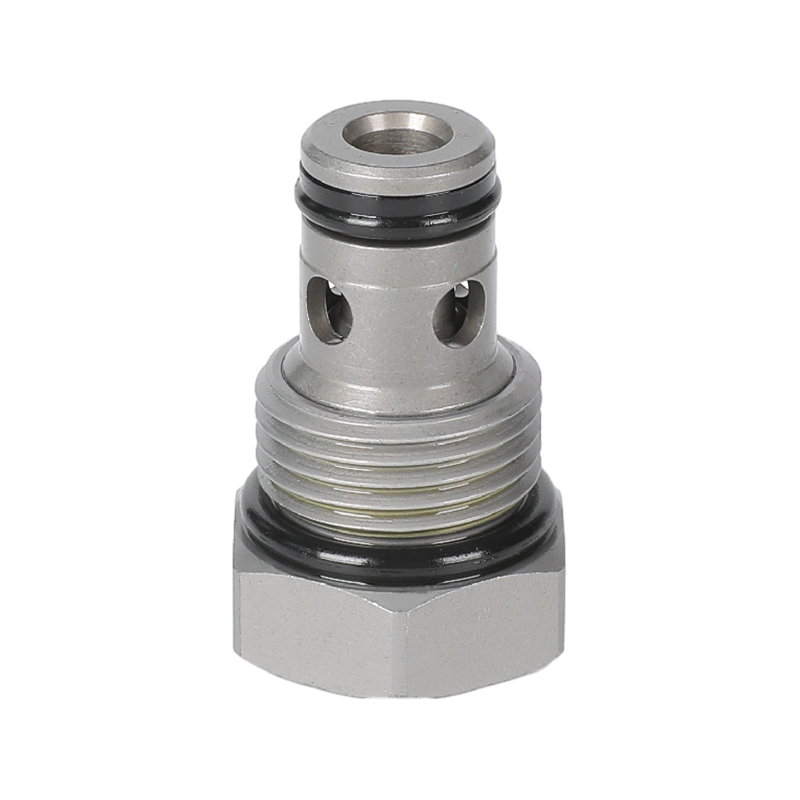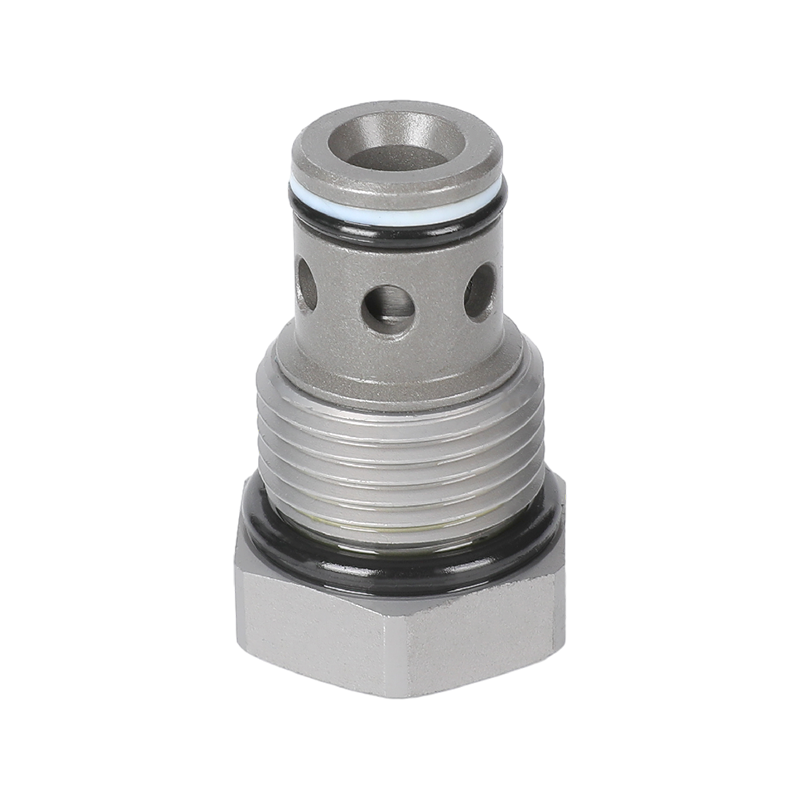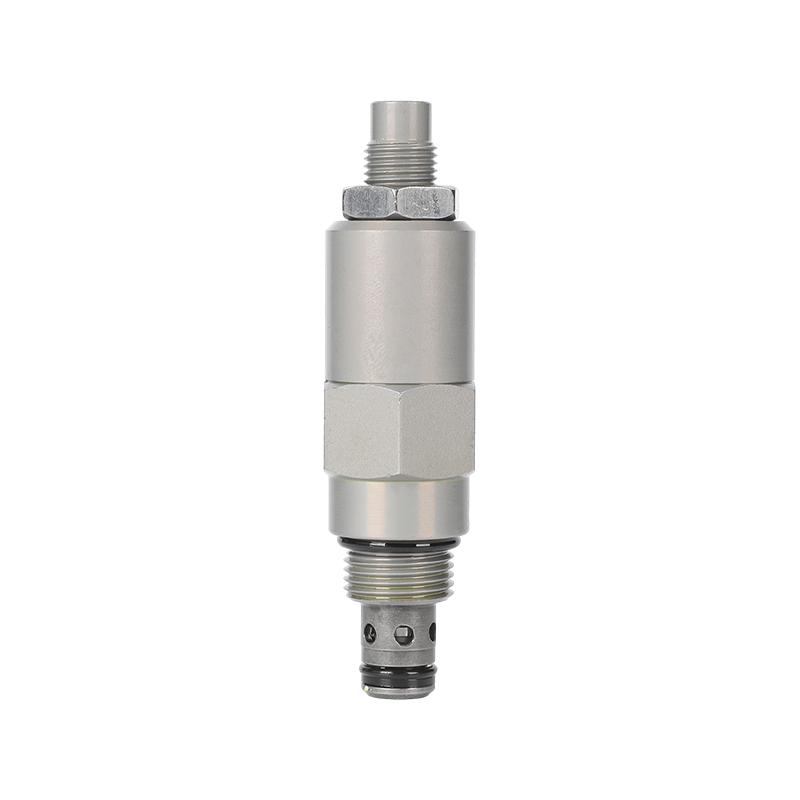1. Fault phenomenon: pressure fluctuation or instability
Possible causes:
Valve core stuck or blocked: During long-term use, impurities in the medium (such as dust, corrosion or metal chips) may accumulate on the valve core or valve seat. Over time, these impurities will make the movement of the valve core unsmooth, causing the valve to be unable to maintain a stable open or closed state, causing pressure fluctuations.
Operation medium contamination: If there is a high concentration of contaminants or suspended particles in the fluid system, these impurities will gradually deposit during the flow process, at low flow rates or during shutdown. These impurities may block the valve seat, causing the valve to be unable to accurately control the pressure, resulting in system pressure fluctuations or instability.
Failure of the regulating device: Pressure control valves are usually equipped with regulating devices, such as regulating springs, levers or other mechanical devices, for accurately adjusting the opening degree of the valve. If the springs in these devices are fatigued, aged, or have mechanical failures (such as deformation, breakage, etc.), the valve may not be able to accurately adjust the pressure according to the set value, resulting in pressure fluctuations.
Troubleshooting and solutions:
Cleaning the valve: First, shut down the system and disassemble the valve to check whether there is dirt or sediment on the valve core and valve seat. Clean the valve thoroughly with appropriate cleaning fluid or chemical reagents. Polish the valve core and valve seat to remove possible dirt and scratches.
Replace the operating medium: Check the cleanliness of the medium to ensure that it meets the relevant standards. If the medium is found to be seriously contaminated, the filter can be replaced and a higher precision filter device can be used to ensure the cleanliness of the medium.
Check the adjustment device: Disassemble and check the springs, seals and other components in the adjustment device. If the spring is loose or fatigued, it should be replaced immediately; if other mechanical devices are damaged, they also need to be repaired or replaced.
2. Fault phenomenon: Valve leakage
Possible causes:
Poor sealing: The sealing surface and sealing ring are important parts for controlling pressure. If the sealing surface is scratched, worn or corroded, or the sealing ring is aged, the pressure sealing cannot be guaranteed, resulting in valve leakage.
Excessive pressure: The pressure control valve is designed with a maximum pressure range. If the pressure in the system exceeds the design limit of the valve, it may cause cracks or permanent deformation of the valve body or sealing surface, eventually causing the valve to leak.
Valve body aging: For pressure control valves that have been used for a long time, the valve body may crack or deform due to material fatigue or corrosion, which will affect the sealing of the valve.
Troubleshooting and solutions:
Check the sealing surface and sealing ring: First check the smoothness of the sealing surface. If there are scratches or wear, you can use special tools to polish and repair it. If the sealing ring is aged, hardened or damaged, it should be replaced in time. High temperature resistant and corrosion resistant materials can be selected to improve the sealing performance.
Avoid overpressure operation: Check the working pressure of the system to ensure that it does not exceed the maximum pressure bearing capacity of the valve. If overpressure is found, the pressure can be stabilized by installing a pressure reducing valve or adding a relief device.
Replace aging parts: When the valve body is aged or cracked, the damaged parts should be replaced immediately. If the valve has been severely corroded or even cracked in the valve body itself, consider replacing the entire valve to avoid safety hazards.
3. Fault phenomenon: The valve cannot be opened or closed
Possible causes:
Drive device failure: Pressure control valves are usually equipped with pneumatic, hydraulic or electric actuators to drive the valve to open and close. If there is a fault in the electrical connection, pneumatic connection or hydraulic system of the drive unit, the valve will not respond to the control signal, resulting in failure to open or close normally.
The viscosity of the operating medium is too high: The viscosity of the fluid directly affects the control response of the valve. If the viscosity of the fluid is too high (such as oil, certain high-viscosity liquids, etc.), the drive unit may not be able to provide enough power to drive the movement of the valve, resulting in the valve being unable to open or close normally.
Valve stem stuck: If there is not enough lubrication between the valve stem and the valve body, or due to rust, contamination and other problems on the valve stem, the valve stem may get stuck during movement, resulting in the valve being unable to open or close smoothly.
Troubleshooting and solutions:
Check the drive unit: Check the working status of the electric, pneumatic or hydraulic actuator to ensure that they can respond to the control signal normally. Check whether there are faults in the electrical connection, air pressure, hydraulic and other systems. If the drive unit is faulty, it needs to be repaired or replaced.
Replace the operating medium: In the hydraulic system or pneumatic system, ensure that the viscosity of the operating medium is moderate. If the medium viscosity is too high, you can consider adjusting the fluid temperature (heating equipment) or selecting a medium with lower viscosity.
Lubricate the valve stem: Check the contact surface between the valve stem and the valve body, and lubricate it with appropriate lubricating oil or grease to ensure that the valve stem can move smoothly. If the valve stem is rusted or contaminated, it needs to be thoroughly cleaned and relubricated.
4. Fault phenomenon: Inaccurate pressure setting
Possible causes:
Loose adjustment bolt: Pressure control valves usually use adjustment bolts to set and adjust the pressure value. If the adjustment bolt is not tightened or loosens during operation, the pressure adjustment of the valve will be inaccurate, resulting in the actual pressure not matching the set value.
Spring fatigue: The spring in the adjustment device adjusts the opening of the valve according to the change in system pressure. If the spring is fatigued, aged or broken, the valve cannot accurately respond to the set pressure, causing the pressure to deviate from the target value.
Pressure sensor failure: The pressure sensor in the pressure control system is used to monitor the system pressure and feed it back to the adjustment device for adjustment. If the sensor fails, the control system cannot obtain accurate pressure data, which affects the adjustment function of the valve.
Troubleshooting and solution:
Check and tighten the adjustment bolt: Check whether the adjustment bolt is loose, readjust it and ensure it is tightened. During operation, avoid loosening of bolts due to vibration or external force.
Replace spring: Check whether the elasticity of the spring decreases, and replace it with a new spring if necessary. Especially in high-pressure or high-frequency use environments, the fatigue of the spring will increase, and it should be checked regularly.
Check the control system: Check the electrical connection and working status of the pressure sensor. Make sure that the sensor outputs accurate pressure signals. If a sensor failure is found, the sensor needs to be repaired or replaced.
5. Fault phenomenon: valve vibration or excessive noise
Possible causes:
Too much or too little flow: When the flow is too large, the flow rate of the fluid increases, and the impact and disturbance of the fluid inside the valve will cause vibration or generate large noise. On the contrary, too little flow may cause uneven fluid flow, vortex, and may also cause noise.
Improper valve selection: If the specifications of the valve do not match the working conditions of the system (such as pressure, flow, etc.), the valve may work unstably, causing vibration or noise.
Pipeline imbalance: Unbalanced pressure in the pipeline or improper pipeline layout may cause abnormal fluid flow, which in turn affects the stability of the valve and generates noise and vibration.
Troubleshooting and solutions:
Adjust the flow rate: Check the flow rate of the system to ensure that it is within the adaptability range of the valve. If the flow rate is too large or too small, adjust the regulating device of the pump or pipeline to keep the flow rate within a reasonable range.
Replace the appropriate valve: Select a pressure control valve of appropriate specifications according to the actual working conditions of the system to avoid unstable operation caused by mismatched specifications.
Balance pipeline pressure: Check whether there is excessive or insufficient local pressure in the pipeline. If so, it may be necessary to add pipeline supports, shock absorbers or silencers to reduce vibration and noise.

 English
English русский
русский
 ++86-0575-87669088
++86-0575-87669088


